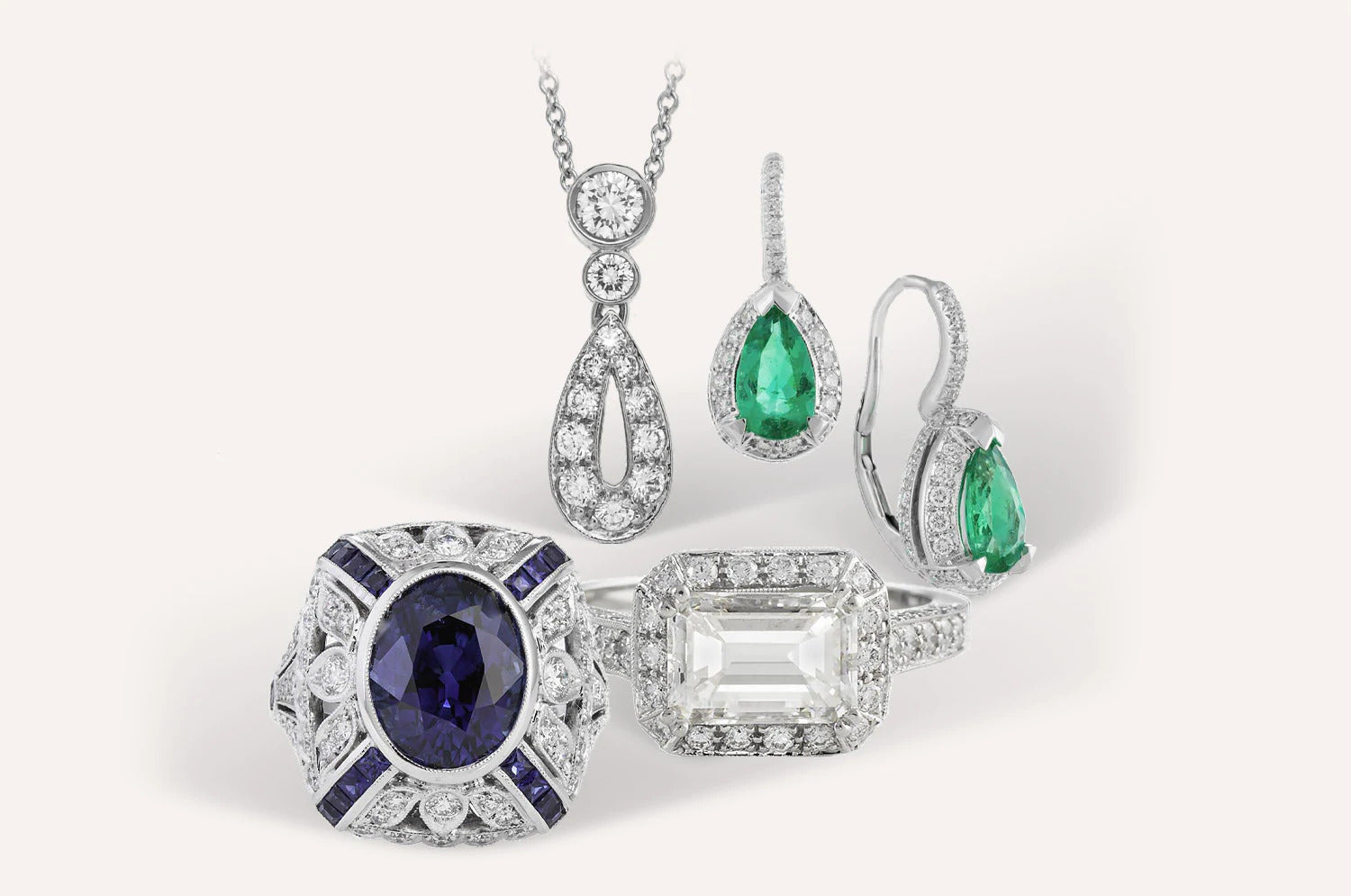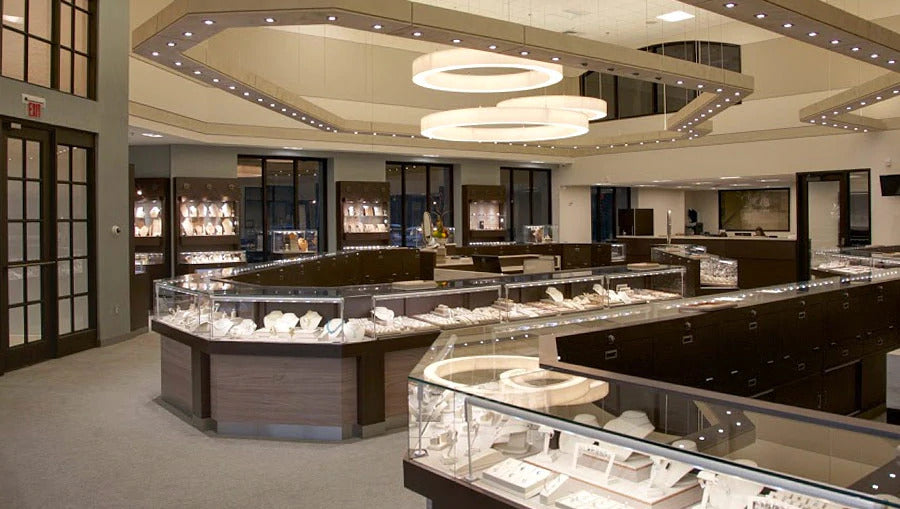FAQ's
Diamonds are one of the hardest substances known to man. To protect your diamonds from damage or chipping, remember these simple tips:
- Don’t jumble your diamond jewelry together or against other pieces to keep diamonds from scratching each other or other jewelry.
- Keep your diamond jewelry in a fabric-lined jewel case or in a box with compartments or dividers.
- Don’t wear your diamonds when doing rough work. Diamonds can be chipped by a hard blow.
- Don’t let your diamond jewelry come in contact with chlorine bleach or other chemicals as they can pit or discolor the mounting.
- Clean your diamond jewelry using either commercial jewelry cleaner, a mix of ammonia and water, or a mild detergent. Dip jewelry into the solution and use a soft brush, like a toothbrush, to dislodge dirt from under the setting.
- See your jeweler at least twice a year to have your diamond jewelry professionally cleaned and checked for loose prongs on your diamond, damage or wear.
Cut! Ask us why!
Because expertise in the grading, selection and sale of diamonds takes years of training, first look for a jeweler who has the education and experience to guide you through the buying process. You should also choose a jeweler you trust and who will stand behind the merchandise they sell. You also want someone qualified to appraiser your pieces and repair your pieces. Look for a professional jeweler who is established in the community and has an excellent reputation for integrity and service. Ask to see their credentials.
Every three to five years as the prices in the market for diamonds and precious metals can change.
The highest credential available in the industry is an American Gem Society Certified Gemologist Appraiser (CGA). A person with this designation has not only the gemological education to evaluate diamonds and colored gemstones, but also the education to properly appraise jewelry. There are around 520 CGA’s in the United States, only 5 in Mississippi and Juniker Jewelry Co. has the only two in the Jackson metro area.
Which one will wear better? Why is platinum’s purity important to me? Platinum is a dense metal that is 95% pure. Platinum is hypoallergenic, tarnish-resistant and extremely durable. Platinum will not turn yellow over time like white gold, and will always keep its beautiful white bright color. And everyone wants the safest security for their diamond and platinum provides the needed strength.
No, it is quite different. White gold is really yellow gold with other metals added to it to achieve a white look. Platinum is white to begin with and maintains its white luster permanently. Since white gold is really yellow gold with alloys added to it, the alloys tend to wear away as you wear your white gold jewelry. The piece of jewelry may tend to look a little yellow and tarnished. To keep your white gold jewelry looking its best, you can have it polished and rhodium plated on a regular basis.
Platinum jewelry should be cleaned the same way you clean other fine jewelry. Use a good prepackaged jewelry cleaner or have it professionally cleaned by your local jeweler. As with all precious jewelry, handle with care, not allowing pieces to touch or scratch each other.
Signs of wear, including scratches, will inevitably appear in all precious metals, even platinum. However, platinum’s durability and strength keeps you from losing very little metal when the piece is scratched. Platinum simply displaces itself or changes shape. It does not wear away. Gold jewelry is softer and will wear away over time as the pieces are scratched. Jewelry can be polished if it does develop visible scratches to brink back its beautiful original shine!
Platinum’s white color beautifully contrasts with yellow gold and adds versatility to your existing wardrobe. We encourage people to wear whatever combination of jewelry they enjoy.
Diamond and Precious Gemstone Jewelry-Clean regularly using either commercial jewelry cleaner, a mix of ammonia and water, or a mild detergent. Dip jewelry into the solution and use a soft bristle brush, like a toothbrush, to dislodge dirt from under the setting. The best way to clean jewelry is with an ultrasonic cleaner
See your jeweler at least once a year to have your diamond jewelry professionally cleaned and checked for loose prongs and wear. We check jewelry complimentary for security so come see us today.
January – Garnet
February – Amethyst
March – Aquamarine
April – Diamond
May – Emerald
June – Pearl / Alexandrite
July – Ruby
August – Peridot
September – Sapphire
October – Opal
November – Topaz
December – Turquoise
1 – Gold Jewelry
2 – Garnet
3 – Pearls
4 – Blue Topaz
5 – Sapphire
6 – Amethyst
7 – Onyx
8 – Tourmaline
9 – Lapis
10 – Diamond Jewelry
11 – Turquoise
12 – Jade
13 – Citrine
14 – Opal
15 – Ruby
16 – Peridot
17 – Watches
18 – Cat’s-Eye
19 – Aquamarine
20 – Emerald
21 – Iolite
22 – Spinel
23 – Imperial Topaz
24 – Tanzanite
25 – Silver Jubilee
30 – Pearl Jubilee
35 – Emerald
40 – Ruby
45 – Sapphire
50 – Golden Jubilee
55 – Alexandrite
60 – Diamond Jubilee






